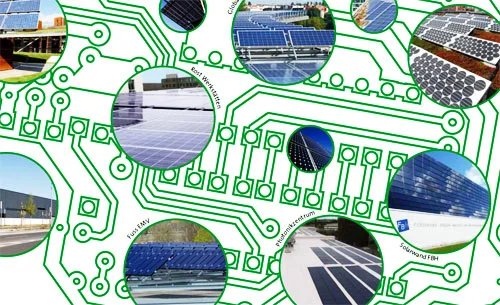Adlershof solar power plant: From testing ground for solar installations to respectable power supply
The new solar cells on the roof of Studio H were the crowning achievement: now numbering twenty one, the photovoltaic installations in Adlershof together generate far in excess of 1 MW of electric power under the maximum solar irradiation – a scale also on a level with conventional smaller power plant. What began as a testing ground for solar cells has now evolved into a serious factor in the supply of power to Adlershof.
The solar cells in Adlershof produce enough power each year to cover the needs of over 330 single family homes. Accordingly, the photovoltaic installations afford a genuine contribution to the supply of power on the premises. “Yet they also have a second, very important function,” confided Klaus Thiessen, the solar pioneer of Adlershof and an active scientific consultant despite his 83 years. “They allow direct comparisons between different systems and manufacturers.”
For instance, like the solar cells installed recently by the company Dachland on Studio H in Media City: “They consist of both bifacial and unifacial cells,” he went on to explain. Whereas unifacial cells have only the one active side, bifacials have two: a reflector on the base directs sunlight on the solar cell’s rear side, which is actually in the shade. This light too is then converted into electricity. Now there are scientific investigations into the extent of this effect for everyday operations in Central Europe. “The operator is an Israeli company that decided specifically in favour of Adlershof as the location for its experiments,” said Thiessen. “Our reputation as a testing ground has travelled very far indeed.”
Klaus Thiessen knows a great many anecdotes testifying to the trials and tribulations of this path. For example, in 2000, an employee had to climb on the roof of the WISTA main building and use a red flag to show the height of the planned solar installation. Not until then could an official be convinced that this would not spoil the overall impression of this historic building. Also the reservations of the police, that the ten ground-level and freely accessible solar movers from Solon would quickly become the target of vandalism, proved unfounded – clearly photovoltaics enjoys a positive image in all sections of the population. Every day for the last six years now, these solar modules have continued turning automatically to the sun.
The expansion of the Adlershof solar power station might now benefit further from a product made by Adlershof innovation. Standing in front of the Sulfurcell office building, you would never guess at the first glance that there are thin film solar cells of copper indium sulphide concealed behind the stylish black glass elements of the facade. The electricity they produce covers a third of the energy needs in the office building. “What’s special about the solar modules from Sulfurcell is that they can be installed precisely like conventional facade cassettes,” explained Bernd Ludwig, Head of the Photonics and Optics Centre in Adlershof. “Hence the production of solar electricity is no longer restricted to the rooftop.” Specifically the roof of his centre presents an additional facet in the diverse range of solar technologies in Adlershof: instead of the usual bitumen board, there is a thin foil with amorphous silicon solar cells – a low cost variant that combines waterproofing and power generation.
A new photovoltaics centre will make sure that more of these innovative ideas will be developed in future at the Adlershof location. From the autumn of 2012, when Bernd Ludwig has finished coordinating the last of the building work, the centre is to provide a home to about eighteen solar companies on 8000 square metres. These companies can then choose from 2000 square metres of laboratories and just as much hall space for pilot productions. “Besides utilising solar energy for supplying the building, we shall also be concentrating on consistent energy saving,” explained Ludwig. “The energy needs will be 30% below the state specifications, and the building will be certificated by DGNB, the German Sustainable Building Council.”
by Wolfgang Richter
